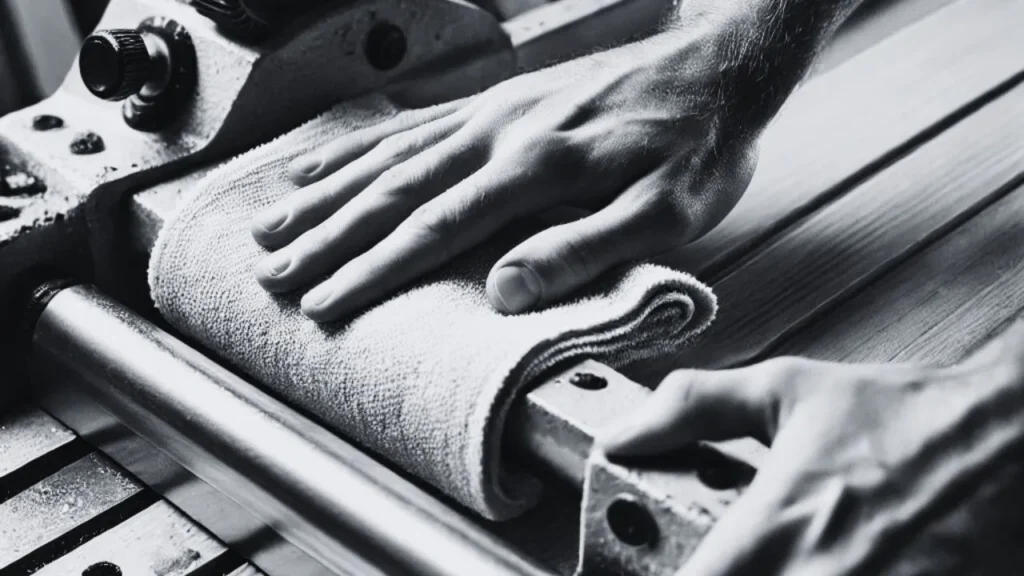For those who regularly engage in woodworking, a thickness planer is an indispensable tool. This machine, which is designed to trim wooden boards to a consistent thickness throughout their length and flat on both surfaces, can immensely improve the quality of your woodworking projects. However, like any other machine, a thickness planer requires regular upkeep to perform at its best. Among the most crucial aspects of this maintenance is lubrication.
Lubrication Importance
Lubrication plays a vital role in the operation and longevity of a thickness planer. When properly lubricated, the planer produces smoother cuts, operates more efficiently, and its parts are less prone to wear and tear. Therefore, lubricating your thickness planer not only enhances its performance but also prolongs its lifespan, saving you the cost of frequent replacements.
Furthermore, regular lubrication can reduce the likelihood of the planer’s parts rusting, a common problem when working with damp wood or in humid conditions. Rust can seriously damage the planer’s components, leading to faulty operations and costly repairs.
Tools & Materials Needed
To successfully lubricate your thickness planer, you will need several tools and materials at hand. These include:

- A lubricant: For the gear train and mechanical components, a high-speed, high-stress lubricant such as motorcycle chain oil is recommended. For the feed rollers and other parts, a non-sticky lubricant that does not attract dust or sawdust is suitable. For the planer bed, a dry lubricant or paste wax is ideal.
- A cleaner: A cleaner such as Simple Green is necessary to remove pitch and other residues from the planer bed before lubrication.
- A rag: This is used to wipe and distribute the lubricant evenly on the components.
- Compressed air or a vacuum: These are used to blow or suck away dust and chips from the planer bed and feed rollers before lubrication.
Safety Precautions
Before you commence the lubrication process, it’s important to take a few safety precautions to protect yourself and your machine. First, ensure the thickness planer is switched off and unplugged from the power source. This is to prevent accidental starts that could lead to injuries.
Secondly, wear protective gear. This includes safety glasses to protect your eyes from flying dust and debris, and gloves to safeguard your hands when handling lubricants and cleaning agents. It’s also a good idea to wear old clothing or an apron to shield your body from spills and splatters.
Lastly, ensure you work in a well-ventilated area. Some lubricants and cleaning agents can produce fumes that may be harmful when inhaled. A well-ventilated area ensures these fumes are quickly dispersed, reducing your exposure.
Cleaning The Thickness Planer Before Lubrication
Before you start lubricating your thickness planer, it’s crucial to first ensure it is clean. This is because dust and other debris can interfere with the lubrication process, leading to subpar results. So, how do you go about cleaning your thickness planer?
One way is by using compressed air or a vacuum. These tools are excellent for removing dust and chips from the planer bed and feed rollers. You just need to aim the air or vacuum nozzle at the areas you want to clean and allow the powerful suction or gust to do the work.
For more stubborn residues such as pitch, a cleaner like Simple Green can be used. Apply it to the planer bed, let it sit for a few minutes to loosen the residues, and then wipe it off with a rag. You’ll be left with a clean, residue-free surface that’s ready for lubrication.
4 Steps To Lubricate The Thickness Planer
Follow the steps to lubricate the thickness planer effectively:

1: Lubricating The Gear Train & Mechanical Components
The next step in the lubrication process is to lubricate the gear train and mechanical components of your thickness planer. These parts are often subjected to high speeds and stresses, especially when the planer is in use. Therefore, they need a lubricant that can withstand these conditions.
A high-speed, high-stress lubricant such as motorcycle chain oil is ideal for this purpose. It coats the gears and other mechanical parts, reducing friction and wear. This not only enhances the performance of these components but also prolongs their lifespan.
To apply the lubricant, pour a small amount onto a rag and then wipe it onto the components. Be careful not to use too much, as this can attract dust and lead to grime buildup.
2: Lubricating The Feed Rollers
The feed rollers of your thickness planer also need regular lubrication, especially if you frequently work with moist or acidic wood. This is because such wood can cause the rollers to wear out faster, leading to uneven feeding and, consequently, inconsistent planing.
To lubricate the feed rollers, select a non-sticky lubricant that does not attract dust or sawdust. Apply it onto a rag and then wipe it onto the rollers. Ensure you cover the entire surface of each roller to provide comprehensive protection.
Remember, the goal is to reduce friction between the rollers and the wood, so they can smoothly feed the wood into the planer. Therefore, ensure you lubricate the rollers regularly for optimal performance.
3: Lubricating The Planer Bed
Let’s turn our attention now to the planer bed. This is the surface on which the wood slides as it is being planed. To ensure smooth operation, it requires lubrication, but not just any lubricant will do. For this part, a dry lubricant or paste wax is the order of the day. This type of lubricant is ideal because it prevents boards from sticking to the planer bed while providing a slick surface that allows the wood to glide with ease.
To lubricate the planer bed, apply a layer of dry lubricant or paste wax. Spread it evenly across the surface and let it dry for a few minutes. Once dry, use a soft cloth to buff it out. This process will ensure a smooth, non-sticky surface that facilitates the effortless feeding of boards into the thickness planer.
4: Avoiding Over Lubrication
While we’ve stressed the importance of lubrication, it’s equally crucial to understand that more is not always better. Over-lubrication can lead to a host of problems, including the attraction of more dust and debris. This is particularly true for sealed components like the chains inside the planer. Here, minimal lubrication is best to prevent the accumulation of dirt, which could compromise the component’s operation.
The key is to apply lubricants sparingly and only where needed. For instance, when lubricating the gear train and mechanical components, only a light coat of lubricant is necessary. Apply it with a rag and ensure it’s evenly distributed. The same goes for the feed rollers – use a non-sticky lubricant and apply just enough to cover the surface. Remember, the goal is to reduce friction, not drown the machine in oil.
Conclusion
By now, you should have a pretty good idea of how to effectively lubricate your thickness planer. But let’s quickly recap. Remember to clean your planer thoroughly before you start. Use a vacuum or compressed air to get rid of dust and a cleaner like Simple Green for more stubborn residues. When it comes to lubrication, use the right kind for each part – motorcycle chain oil for the gear train and mechanical components, a non-sticky lubricant for the feed rollers, and a dry lubricant or paste wax for the planer bed.
But also remember this: lubrication is just one part of maintaining your thickness planer. Regular inspection of your machine for signs of wear and timely replacement of worn-out parts is equally important. Keeping your planer clean after each use, and storing it properly will also contribute to its longevity.
In the end, the effort you put into maintaining your thickness planer will directly translate into the quality of your woodworking projects. So, take the time to care for your equipment, and it will serve you well for many years to come.